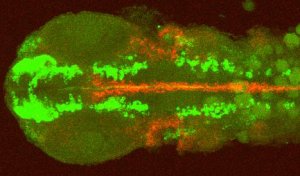Novel method to reveal drug targets

Wellcome Trust Sanger Institute scientists have developed a new large-scale method to identify the interactions between proteins that are a major target for therapeutic intervention. The novel method can identify the weak, short-lived interactions that are characteristic of cell responses to cues from the environment or from within the body.
Cell surface proteins are targets for many drugs and are central to many processes of cell regulation, such as some cancer therapeutics, diabetes, and growth. The team hope the method will uncover many important interactions that are invisible to current detection methods.
Many proteins act as molecular switches, responding to signals and activating specific genes or specific cell processes. Using biochemical tricks to increase the chances of detecting the transient and weak, but potentially important, interactions, the scientists describe 17 new pairs of interactions in mammalian cells.
“Our new method transforms the large-scale search for these important interactions.”
Dr Gavin Wright Junior Investigator at the Wellcome Trust Sanger Institute
Unlike DNA sequencing, where methods are common to all organisms, there has been no one approach that gives a global fit for all diverse protein-protein interactions. The new method, called AVEXIS, should be applicable to interactions at the cell surface in many organisms.
“If a genome is the code for life, interactions between proteins are the communications system – the internet of our bodies. The challenge we face is that current methods cannot efficiently detect interactions at the place where communication starts: the cell surface, nor can they reliably detect transient weak interactions.”
Dr Gavin Wright Junior Investigator at the Wellcome Trust Sanger Institute
Drug targets are often proteins at the surface of the cell since they are easily accessible to drugs in contrast to proteins within our cells. Unfortunately, the current catalogue of known protein interactions is biased away from these proteins simply because there was no efficient method to examine them. Effectively, a swathe of clinically important targets is invisible to research.
“AVEXIS now allows us to scale the hunt for biologically and clinically important protein-protein interactions. These interactions are like Velcro® – each hook can bind only weakly, but together, they can have a very strong effect. We increased the strength by gathering the proteins together, as in a small scrap of Velcro®.”
Dr Gavin Wright Sanger Institute
The team identified previously undescribed interactions in a class of proteins called the immunoglobulin superfamily: this group of proteins shares properties that are important to allow cells to respond to their environment, talk to one another and stick together. Using human proteins and zebrafish as a model, the Sanger Institute researchers looked at interactions between 110 proteins in this superfamily – a total of more than 6000 experiments.
They found 17 interactions that met stringent standards of reliability, several of which would last for less than 0.1 seconds in cells. For each, they looked to see where the proteins were located in zebrafish embryos. They found, broadly, two categories; those in which both protein partners are present in the same tissue (and likely to be involved in cell adhesion) and those in which they are present in adjoining tissues (and therefore likely to be involved in communication between tissues). Half of the proteins interact with more than one other protein, forming interaction networks.
The results provide the first network of low-affinity interactions between proteins on the cell surface and the first set of extensive data in the zebrafish, a leading organism for following visually the effects of gene disruption.
“AVEXIS is not restricted to only one specific organism and could be used in many contexts. We found in the zebrafish novel interactions for well-studied proteins and can expect that we will be able to similarly enrich our understanding of human protein interactions.
“The novel interactions can lead directly to the study of protein distribution patterns and to candidates for drug targeting. If an interaction lacks one component that underlies a disease, then one can seek to find small molecules or antibodies that will act to stimulate the network at the point where the absent or dysfunctional protein would be active.”
Dr Gavin Wright Sanger Institute
The Sanger Institute team are interested in using this method to identify the proteins on our cells to which pathogens attach: the contact between pathogen proteins and their host cell surface receptors is often the initiating event during infections. Because extracellular proteins are readily accessible to drugs delivered through the bloodstream, AVEXIS should help to identify novel therapeutic opportunities in both genetic and infectious diseases.
More information
Publications:
Selected websites
The Wellcome Trust Sanger Institute
The Wellcome Trust Sanger Institute, which receives the majority of its funding from the Wellcome Trust, was founded in 1992. The Institute is responsible for the completion of the sequence of approximately one-third of the human genome as well as genomes of model organisms and more than 90 pathogen genomes. In October 2006, new funding was awarded by the Wellcome Trust to exploit the wealth of genome data now available to answer important questions about health and disease.
The Wellcome Trust
The Wellcome Trust is a global charitable foundation dedicated to achieving extraordinary improvements in human and animal health. We support the brightest minds in biomedical research and the medical humanities. Our breadth of support includes public engagement, education and the application of research to improve health. We are independent of both political and commercial interests.


